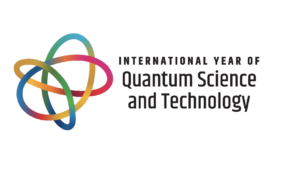Back in 2006, Peter Schwartz, Chris Taylor, and Rita Koselka offered a vision of the future that relies on the development of quantum computers. [“Quantum leap,” Fortune, 2 August 2006] In that article, they predicted that a quantum computer would be developed within four years (i.e., 2010) and the world would change forever. Here’s part of the scenario they laid out:
“She awakes early on the morning of April 10, 2030, in the capable hands of her suburban Chicago apartment. All night, microscopic sensors in her bedside tables have monitored her breathing, heart rate, and brain activity. The tiny blood sample she gave her bathroom sink last night has been analyzed for free radicals and precancerous cells; the appropriate preventative drugs will be delivered to her hotel in Atlanta this evening. It’s an expensive service, but as a gene therapist, Sharon Oja knows it’s worth it. She steps into the shower. The tiles inside detect her presence and start displaying the day’s top headlines. The manned mission to Mars is going to launch ahead of schedule. U.S. military drones have destroyed another terrorist training camp using smart dust. A top Manhattan banker has been found guilty of fraud and sentenced to 10 years of low tech. And today is the 20th anniversary of the very first quantum computer. Sharon laughs. It is her 24th birthday, and she has little idea what the world was like before the qubits – the smallest pieces of quantum information – took over.”
The scenario goes on to describe headbands that provide continuous connectivity, driverless cars powered by hydrogen, perfectly predicted weather, super-encrypted messaging, paperless transactions, and on-time air travel. The scenario ends with a happy Sharon Oja giving “silent thanks to the quantum computer’s creators.” The authors go on to assert that this future is “closer than you think.” We know now, however, that their predictions of a fully functioning quantum computer by 2010 missed the mark. One person who is not surprised their prediction didn’t come true is Gil Kalai, a professor at the Institute of Mathematics at the Hebrew University of Jerusalem. He insists that dreams of developing a quantum computer are just that — dreams. If you want to know why he believes that, watch the videos he posted in a blog entitled “Why Quantum Computers Cannot Work: The Movie!” [Combinatorics and more, 18 March 2014] At the moment, however, Kalai seems to be in the minority of scientists.
As I have noted in previous posts, there are teams of researchers around the globe working on pieces of the puzzle that they believe will eventually lead to a functioning quantum computer. Schwartz, Taylor, and Koselka are optimistic because “some of the world’s leading research agencies and technology companies are on the case. Single electrons have been made to adjust their spin. Subatomic circuitry is within our grasp. But because the breakthroughs are hidden in esoteric journals and described in language that can give even today’s savviest computer users headaches, it is easy to miss the significance of what is going on.” They do concede, however, that “history is littered with promising technologies that didn’t pan out.”
Their optimism, however, is inspired by “quantum computing scientists [who] are surprisingly bullish, for scientists.” For example, Eli Yablonovitch, professor of electrical engineering at UCLA, told them, “This is the most exciting time of my life, and I’m not young. We’re looking forward to a direct impact on everybody in the world.” And Harvard University’s Charles Marcus told them that quantum computing “is tantalizingly possible, just on the edge of being too difficult, with remarkable progress every year. As time goes by we’ll be saying to ourselves, ‘I can’t believe this was so hard.’ We’ll have undergraduates doing it. That’s just the nature of science.” If you have an hour to spare, you can watch a video of a 2006 lecture given at MIT by an IBM scientist named David DiVincenzo. The lecture is entitled “Quantum Computing: Origins and Directions.” The lecture demonstrates why Schwartz, Taylor, and Koselka were so optimistic about quantum computing’s future back in 2006. DiVincenzo is best known in the field for developing “five criteria that any candidate quantum computer implementation must satisfy.” They have become known as the DiVincenzo Criteria. Those criteria are:
- Well-defined qubits.
- Initialization to a pure state.
- Universal set of quantum gates.
- Qubit-specific measurement.
- Long coherence times.
You can find a series of slides on the DiVincenzo criteria by clicking on the following link. If you don’t have time to watch the video, here is a brief description of what DiVincenzo discusses:
“Fear not: David DiVincenzo doesn’t spend much time ‘deep in the guts of the mathematics’ during his ‘grand history’ of quantum computing. Rather, he pays homage to the handful of thinkers who provided the field with its critical concepts. The three men DiVincenzo profiles are ‘outsiders largely, people who were not so well connected with the roaring mainstream of what we do in academia and industrial research … people who had dreams.’ He credits the well-known physicist Richard Feynman with inventing the subject, by proposing that computers might be built of quantum mechanical elements obeying quantum mechanical laws. Feynman envisioned the bits of these computers behaving differently from the bits in ordinary computers, and he puzzled about the possibility of a reversible computer that could run without expending energy. While Feynman raised interesting questions, it was a very unfamous scientist who took the field to its next step. Steven Wiesner, the son of former MIT President Jerome Wiesner, worked for many years as a postal clerk, but ‘was a deep thinker nonetheless,’ says DiVincenzo. In 1970, he explored the implications of simple quantum mechanical laws for secrecy. He had the practical notion of making banknotes counterfeit-proof, by printing them with ‘microtraps’ holding photons, in addition to normal serial numbers. Such photons could never be copied, since they’d occupy random states of polarization. DiVincenzo says Wiesner’s notion of conjugate bases served as the beginning of quantum information theory. In the late 70s and early 80s, small clusters of people became drawn to Feynman’s and Wiesner’s ideas, and spun out such new concepts as superdense coding, and quantum teleportation. Then a ‘third player came from apparently nowhere:’ David Deutsch had the insight to take the quantum mechanics of a bit seriously, says DiVincenzo. Deutsch suggested that the fundamental carrier of quantum information is a qubit, which can exist as 0 and 1 at the same time. He developed a new logic system, a set of rules for quantum computing, ‘which are potentially realizable…Real systems are noisy but if you could make them obey the pristine law of quantum mechanics, this would be a new physical system that could support computation.’ DiVincenzo sees a direct line from Deutsch’s insights to a set of algorithms that form the basis for the current field of quantum computing. While the story is still unfolding, he says he’s confident quantum information processing ‘will eventually change the world.'”
With a preeminent scientist like DiVincenzo claiming that quantum computers will change the world, it’s understandable why Schwartz, Taylor, and Koselka reach the same conclusion. Jump forward to 2014 and you still find optimists among us. One of those optimists is Lev Grossman. He wrote an article that focused on the debate about whether the D-Wave computer is actually a quantum computer. [“9 Ways Quantum Computing Will Change Everything,” Time, 6 February 2014] He concluded that regardless of how that debate ends, quantum computing “technology could herald radical changes for the following areas, to name a few”:
1. Safer airplanes — Lockheed Martin plans to use its D-Wave to test jet software that is currently too complex for classical computers.
2. Discover distant planets — Quantum computers will be able to analyze the vast amount of data collected by telescopes and seek out Earth-like planets.
3. Win elections — Campaigners will comb through reams of marketing information to best exploit individual voter preferences.
4. Boost GDP — Hyper-personalized advertising, based on quantum computation, will stimulate consumer spending.
5. Detect cancer earlier — Computational models will help determine how diseases develop.
6. Help automobiles drive themselves — Google is using a quantum computer to design software that can distinguish cars from landmarks.
7. Reduce weather-related deaths — Precision forecasting will give people more time to take cover.
8. Cut back on travel time — Sophisticated analysis of traffic patterns in the air and on the ground will forestall bottlenecks and snarls.
9. Develop more effective drugs — By mapping amino acids, for example, or analyzing DNA-sequencing data, doctors will discover and design superior drug-based treatments.
Grossman isn’t as bold as Schwartz, Taylor, and Koselka and doesn’t predict when an indisputable quantum computer may be created. Nevertheless, like others, Grossman sees quantum computing leading to a better world. Unfortunately, that better world always seems to be just beyond our grasp.




